Astronauts' stunning photos from the International Space Station show Earth's triumphs and tragedies in 2022
Morgan McFall-Johnsen

Lake Urmia in northwest Iran, once one of the biggest saltwater lakes in the world, on July 30, 2022.NASA
- Astronauts on the International Space Station share stunning images of Earth from 250 miles up.
- From sunsets and moonrises to spewing volcanos and breathtaking deserts, life in space is gorgeous.
Astronauts on the International Space Station (ISS) have a unique view from 250 miles above Earth. They can see both beauty and destruction on the planet below.
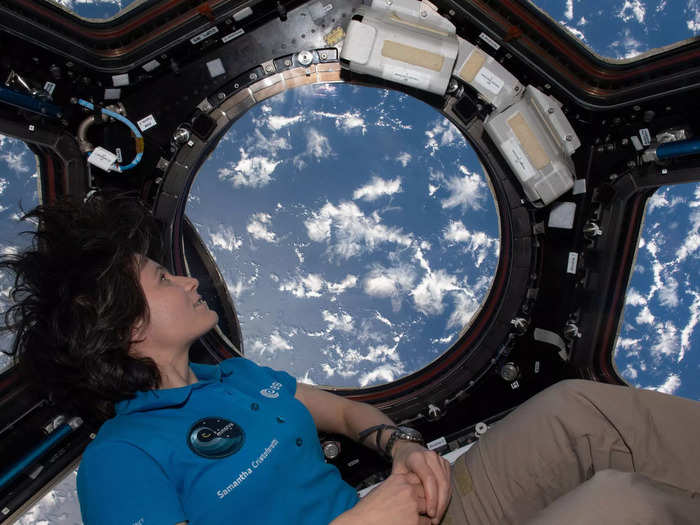
European Space Agency (ESA) astronaut Samantha Cristoforetti looks at the Earth through the cupola, the ISS's "window to the world," while orbiting above the Pacific Ocean off the coast of Peru, on October 1, 2022. NASA
"It's difficult to explain because the emotions are absolutely overwhelming. It is an incredible scene of color, of clouds, and land," NASA astronaut Nicole Mann told the Associated Press in October.
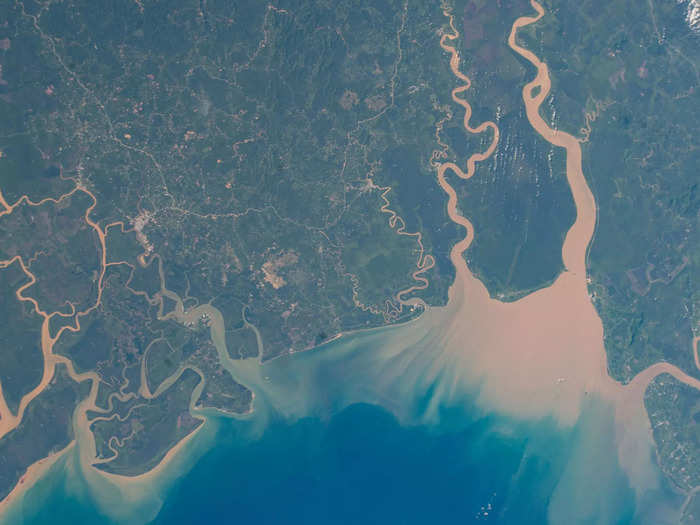
Maludam National Park in East Malaysia is composed of low-lying forests and several rivers that empty into the South China Sea, on June 7, 2022. NASA
"It's difficult not to stay in the cupola all day," she added.
The ISS careens around the planet, completing an orbit every 90 minutes.
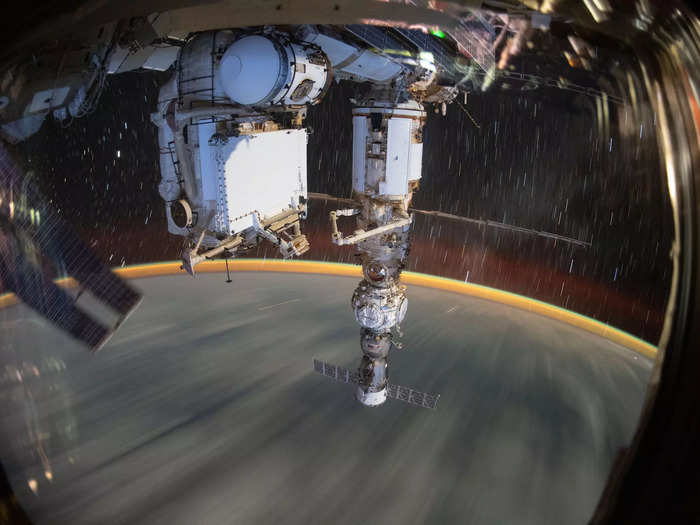
This long-duration photograph shows the Earth 259 miles below a soaring ISS, on September 19, 2022. NASA
That means astronauts see 16 sunrises and sunsets every day.
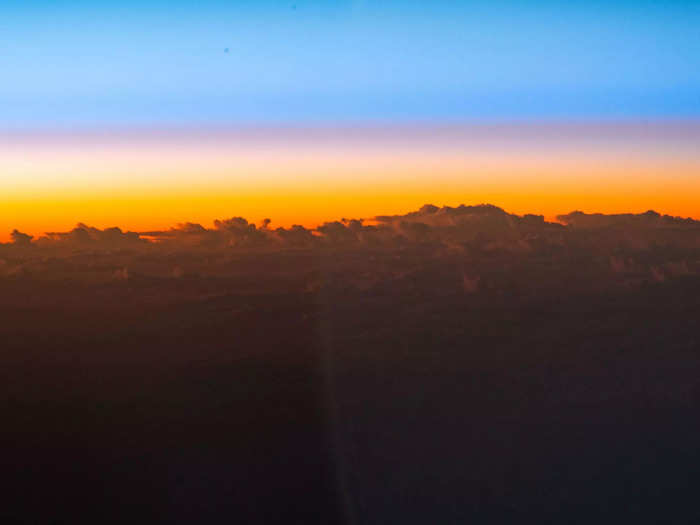
An orbital sunrise begins to illuminate the cloud tops above the Pacific Ocean south of the Hawaiian island chain, on September 15, 2022. NASA
Orbital sunrises are stunning. The colors spill across the horizon, cutting through the darkness of nighttime Earth and the blackness of space above.

The sun's rays begin to illuminate the atmosphere as the ISS flies into an orbital sunrise 261 miles above Texas, on July 16, 2022. NASA
Astronauts also get to see the moon rising and setting above the curvature of the Earth.
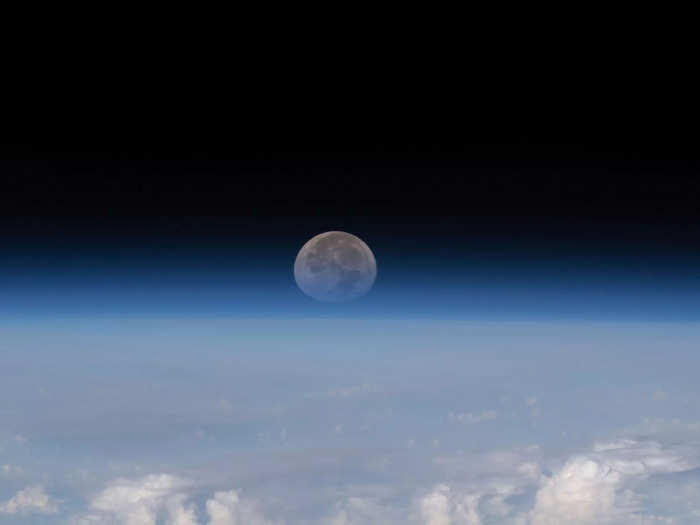
As the moon sets below Earth's horizon, the atmosphere refracts, or bends its light, making it appear flatter in this photograph taken from the ISS above the Himalayas near Kathmandu, Nepal, on June 15, 2022. NASA
Looking down at Earth, astronauts can see even more colors in the mind-bending diversity of our planet's landscapes.
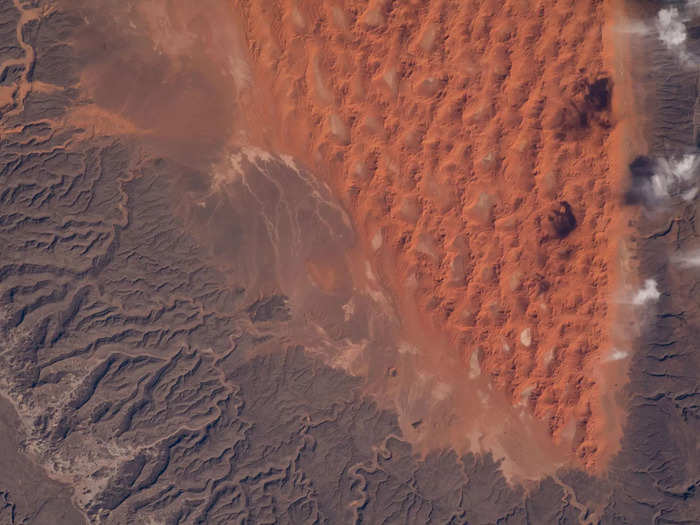
A portion of the Sahara Desert in Algeria, with sand dunes, rocky platforms, and sandstone plateaus, on February 7, 2022. NASA
Prominent natural features, like this circular rocky uplift in the Sahara desert, often catch astronauts' eyes.
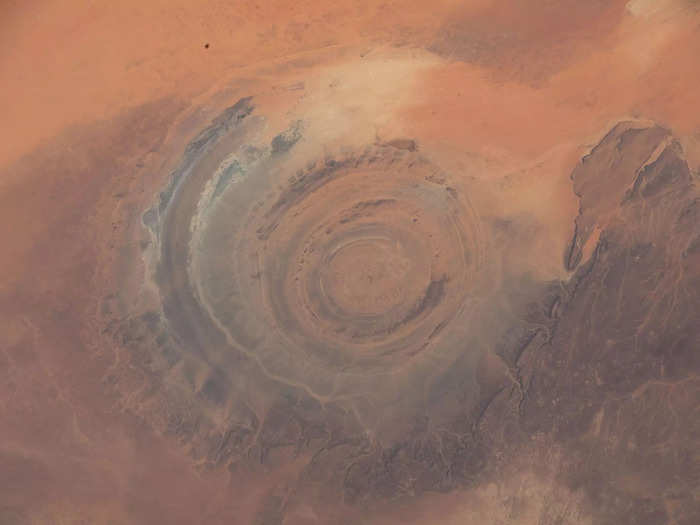
The Richat Structure, also known as the "Eye of the Sahara," an eroded geological dome in Mauritania, on August 21, 2022. NASA
Another circular structure, in icy and rocky Quebec, comes from a meteor impact during the Triassic period.
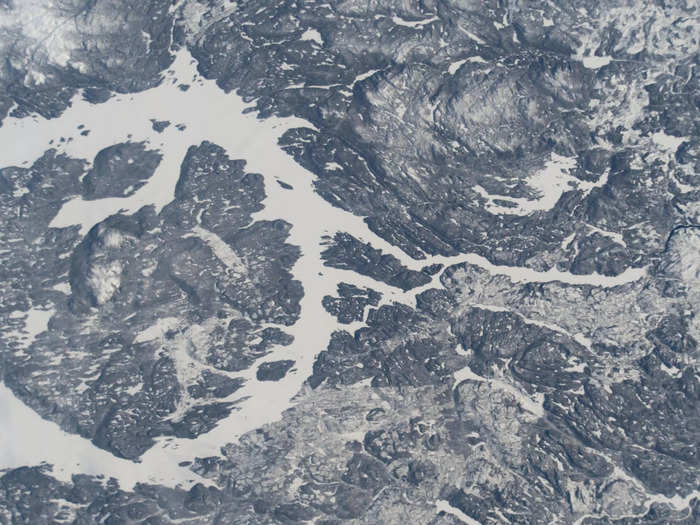
The icy terrain surrounding the Manicouagan Reservoir, a lake formed by a prehistoric meteorite impact in far eastern Canada, on February 13, 2022. NASA
It's visible from pretty far away.
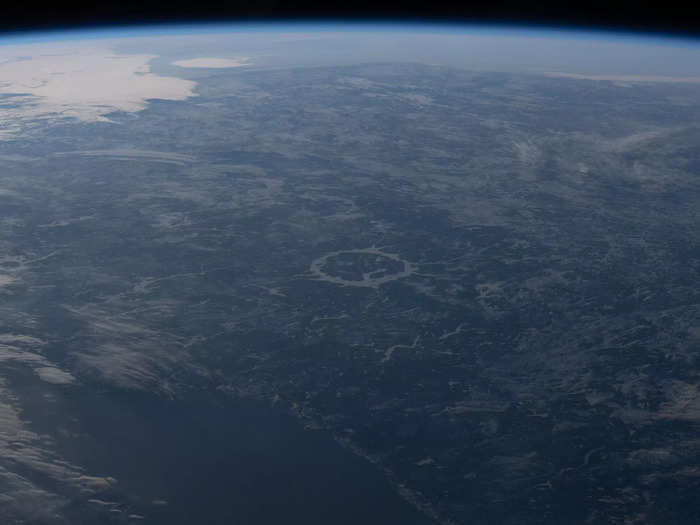
The Manicouagan Crater in Quebec, Canada, figures prominently in the center of this photograph from the ISS, on April 3, 2022. Matthias Maurer/ESA/NASA
Some landscapes appear abstract, like Minnesota's famous lakes at night, which resemble shattered glass or water spilled across a dark table.
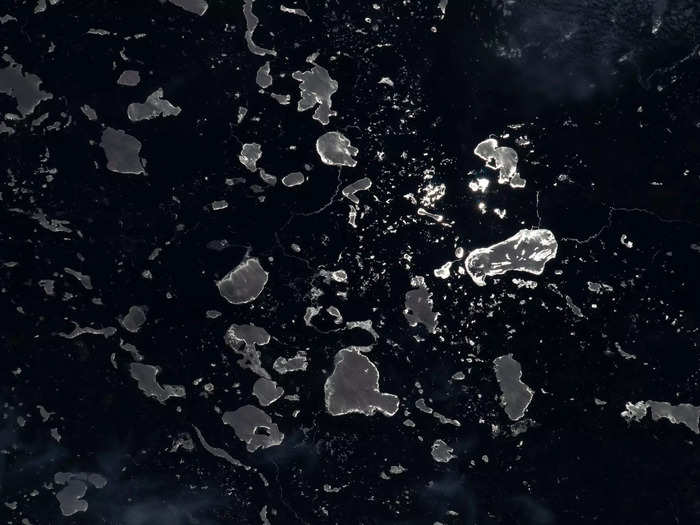
The moon's glint beams off lakes on the US-Canada border, between the state of Minnesota and the province of Ontario, on August 14, 2022. NASA
Others are simpler, such as Italy and Sicily stretching across the sea, like Michelangelo's fresco of Adam and God reaching for each other's fingertips.
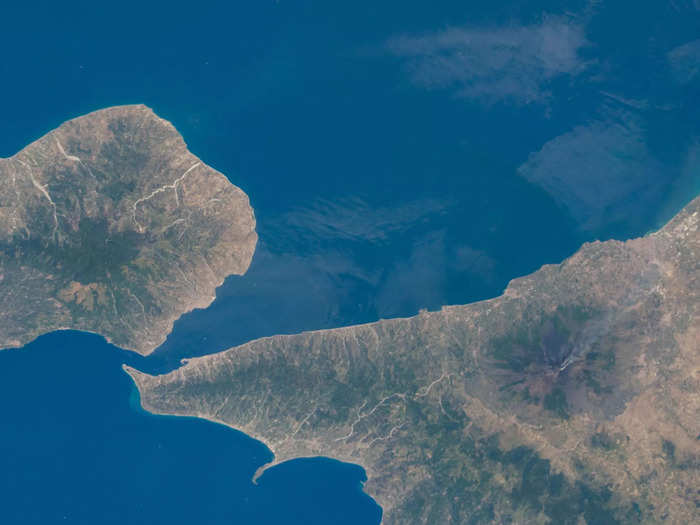
The southern tip of the boot of Italy, left, and the island of Sicily, on June 2, 2022. Mount Etna, lower right, Europe's tallest active volcano on the coast of Sicily, is visible, billowing with activity. NASA
Did you catch the volcano in that last picture? Here's a closer look. Mount Etna is Europe's tallest active volcano.
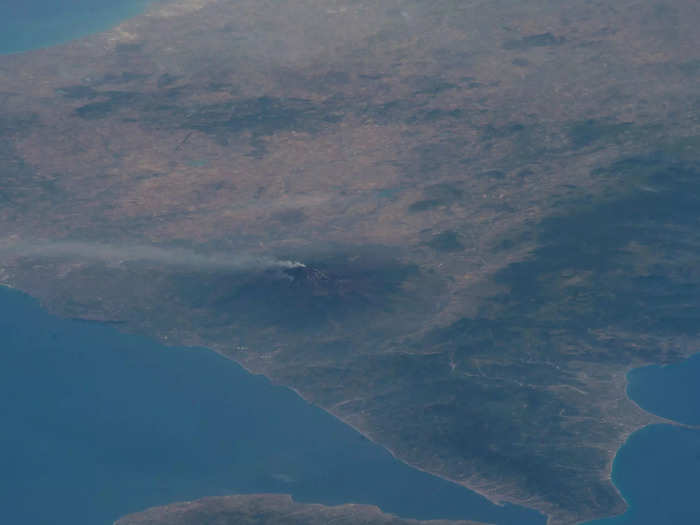
Mount Etna, on the coast of Italy's island of Sicily, is pictured billowing with activity as the ISS passes over Bulgaria, on June 2, 2022. NASA
Preserved areas often feature unique natural landscapes. This national park in Australia features a river cutting through red earth and filling a series of lakes.
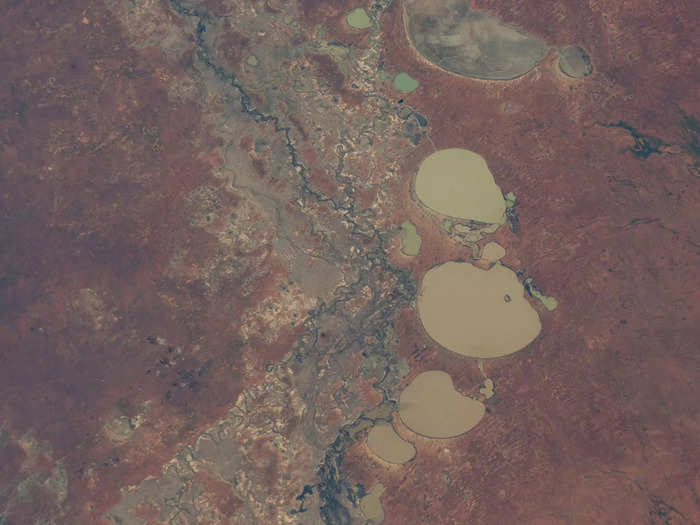
Australia's Kinchega National Park, with the Darling River and several lakes on its eastern edge, on August 31, 2022. NASA
Some of the best sights come at night.

Curitiba, a city of nearly 2 million people in Brazil, lit up at night on July 4, 2022. NASA
At night, astronauts can catch a stunning view of the Milky Way stretching above them. In this photo, a lightning bolt flashes on Earth below.

This time-lapse of the Milky Way galaxy also captured a lightning strike on Earth so bright that it lit up the space station's solar panels. NASA/Kjell Lindgren
Astronauts also enjoy regular, stunning shows of the aurora dancing across the north and south poles.
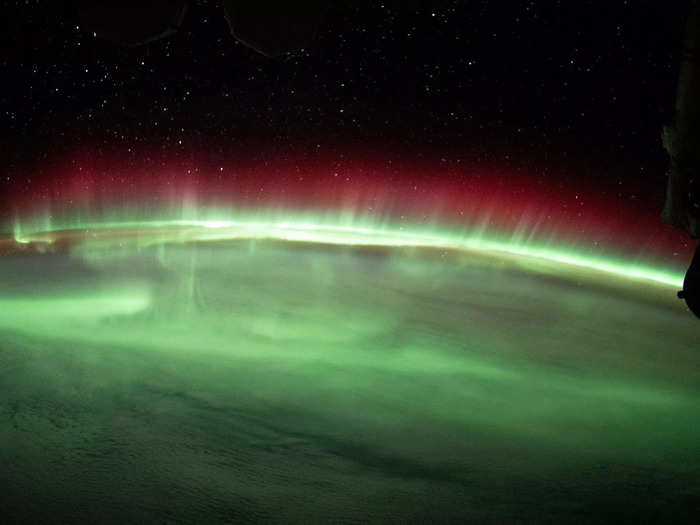
A brilliant aurora streams across Earth's horizon above the Indian Ocean northeast of the French Southern and Antarctic Lands, on August 17, 2022. NASA
But 2022 wasn't all pretty sunsets and stunning landscapes. Astronauts on the ISS said they could see war unfolding in Ukraine, though they didn't post photos of it.
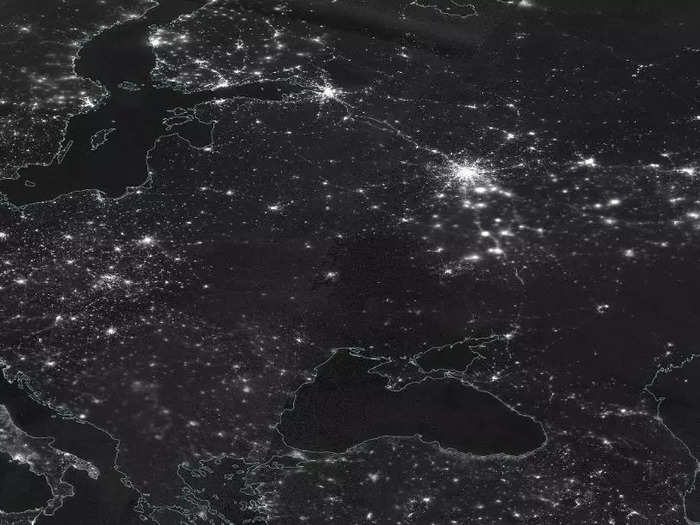
Satellite imagery of night lights across Europe on February 27, 2022, shows a darkened Ukraine after Russia's invasion. NASA Worldview
"At the beginning of the war, the whole country went dark at night," German astronaut Matthias Maurer said in May, adding, "People actually only recognized Kyiv."
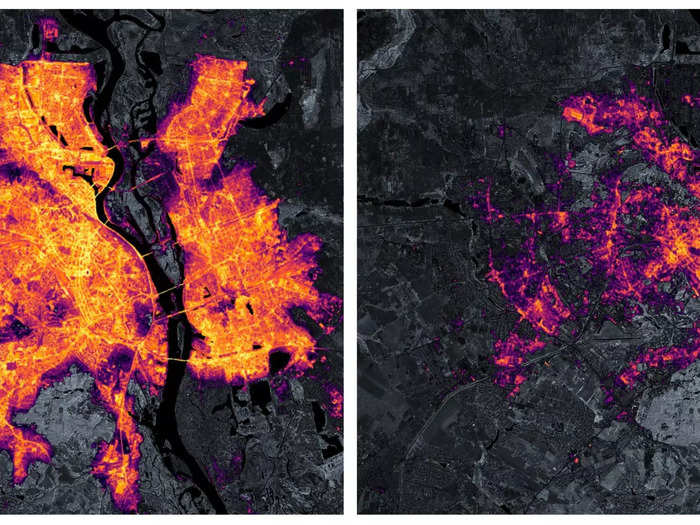
Kyiv, Ukraine, as seen by satellite in January 2022, left, and March 2022, right. NASA Earth Observatory/Joshua Stevens/Black Marble data courtesy of Ranjay Shrestha/NASA Goddard Space Flight Center
That's what he told German broadcaster ARD's "Morgenmagazin" program, according to a translation in Newsweek.
"Then you could also see the impacts in the first days of the war. In Kyiv, you could see lightning at night," as well as the "rockets that hit," he added, according to Newsweek.
Extreme weather battered the world — like Hurricane Ian, which the ISS flew above as it approached Florida.
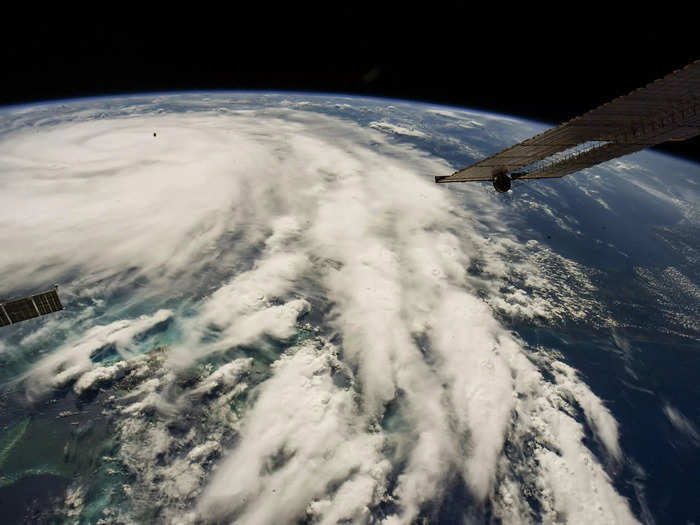
Hurricane Ian, just south of Cuba, builds strength in warm waters, on September 26, 2022. NASA
The ISS often gets a unique view into the eye of a storm. The station also flew over Hurricane Fiona just days after it took out Puerto Rico's power.
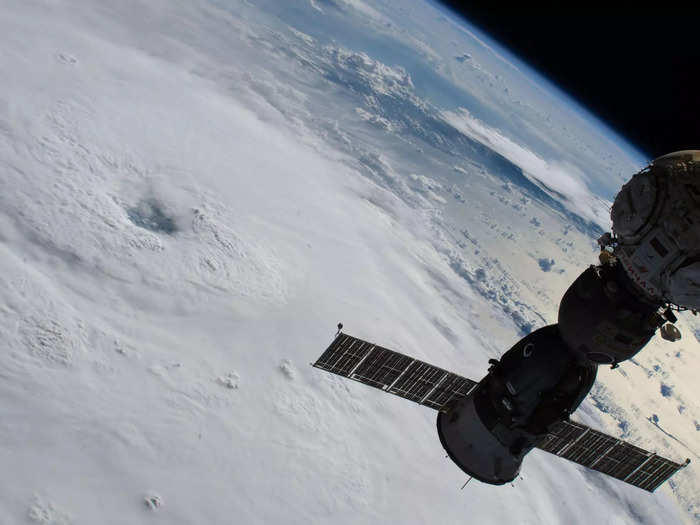
The ISS flies over the eye of Hurricane Fiona in the Atlantic Ocean, north of Puerto Rico, on September 20, 2022. NASA
Astronauts can also see long-term damage humans have caused. This lake is overrun with red algae because dams and agriculture have drawn so much water from it, and drought has further depleted it.
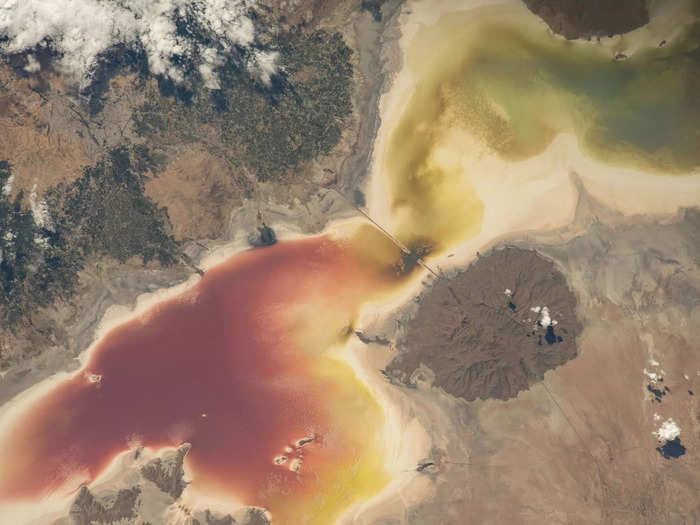
Lake Urmia in northwest Iran, once one of the biggest saltwater lakes in the world, on July 30, 2022. NASA
Astronauts don't spend all day looking out the window, though. They're busy working on experiments and maintenance...
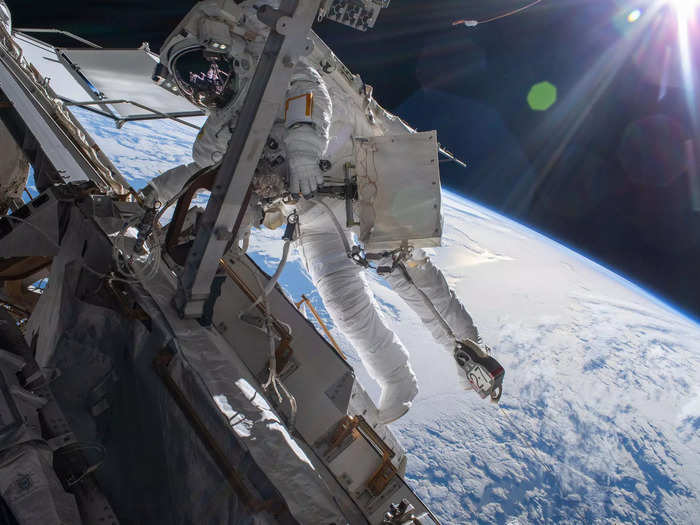
Astronaut Matthias Maurer of ESA is pictured on the ISS's truss structure during a spacewalk, on March 23, 2022. NASA
... welcoming new spaceships full of astronauts or cargo to the ISS...
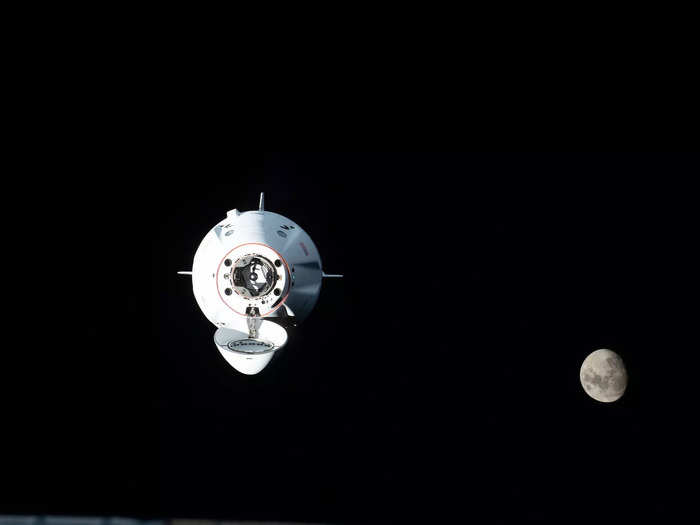
The SpaceX Dragon Endurance ship approaches the ISS with the waxing gibbous moon in the background, on October 6, 2022. NASA/Kjell Lindgren
... saying goodbye to other spaceships...
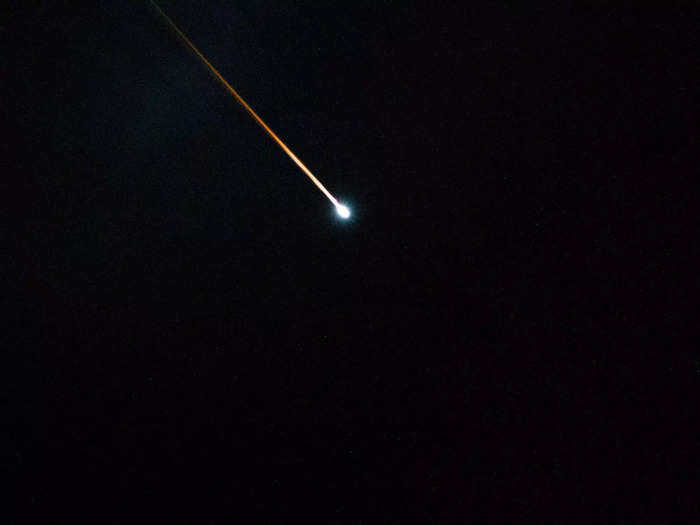
The ISS Progress 79 resupply ship leaves a plasma trail as it reenters Earth's atmosphere for a fiery, but safe demise above the Pacific Ocean, on June 1, 2022. NASA
... or simply having fun...
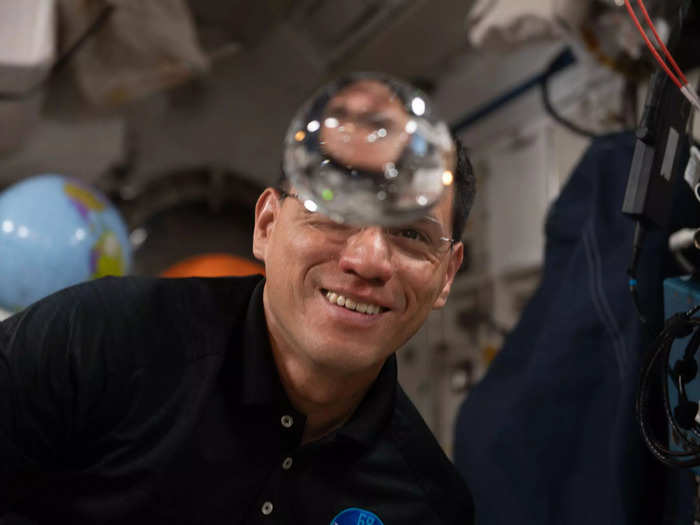
NASA astronaut Frank Rubio observes the behavior of a free-flying water bubble inside the ISS Kibo laboratory module, on October 1, 2022. NASA
... but they still take time to appreciate the view from 250 miles up.
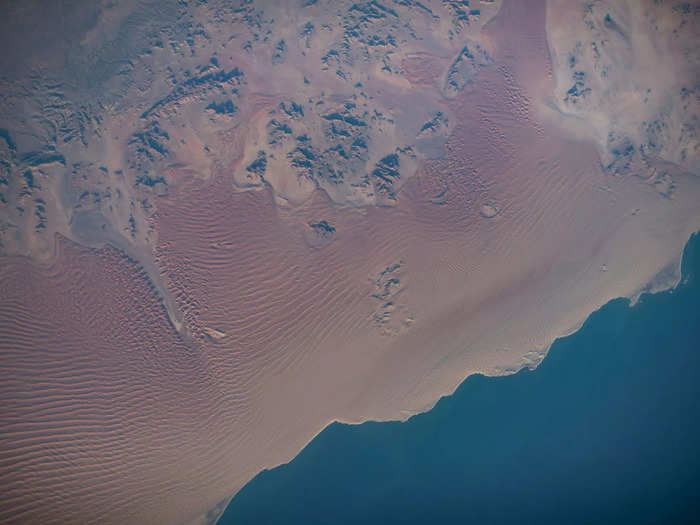
The Namib Desert on Namibia's Atlantic coast, on July 14, 2022. NASA
Popular Right Now
Popular Keywords
Advertisement